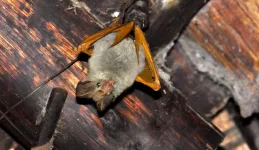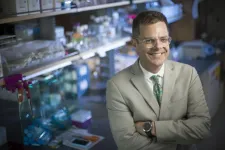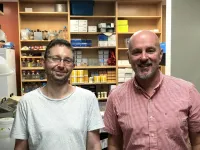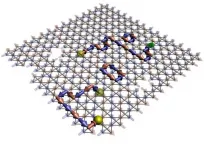(Press-News.org) New research led by the University of Cambridge suggests that autism can be detected at 18-30 months using the Quantitative Checklist for Autism in Toddlers (Q-CHAT), but it is not possible to identify every child at a young age who will later be diagnosed as autistic. The results are published today in The BMJ Paediatrics Open.
The team at the Autism Research Centre in Cambridge conducted a prospective population screening study of nearly 4,000 toddlers using a parent-report instrument they developed, called the Quantitative Checklist for Autism in Toddlers (Q-CHAT). Toddlers were screened at 18 months and followed up at 4 years.
The Q-CHAT is a revision of the original CHAT first published by the same authors in the 1990s. It retains the key items but includes additional items that examine language development, repetitive and sensory behaviours, as well as other aspects of social communication behaviour. Each of the 25 items contains a range of response options, allowing for the endorsement of a reduced rate of key behaviours. In effect, this 'dimensionalises' each item (using a five-point scale of frequency), allowing for variability in responses and a better understanding of the distributions across the specific traits. The revision was motivated by trying to improve on the accuracy of screening toddlers for autism.
In the new research, in phase one, 13,070 caregivers were invited to complete the Q-CHAT about their child at 18-30 months. 3,770 caregivers returned the Q-CHAT, of whom 121 were invited for an autism diagnostic assessment.
In phase two, the sample was followed up when the children were 4, using the Childhood Autism Screening Test (CAST), and a checklist enquiring whether any of the children had been referred or diagnosed with any developmental conditions, including autism. Autism assessments were made using internationally recognized methods.
The sensitivity (the proportion of autistic children correctly identified by the Q-CHAT as being autistic) of the Q-CHAT in predicting autism at phase two is 44%, and the specificity (the proportion of children who are not autistic and who are correctly identified by the Q-CHAT as not being autistic) is 98%. Results also showed that the 'positive predictive value' (the proportion whose screened positive on the Q-CHAT who were found to be autistic) is 28%.
This study demonstrates that early detection and diagnosis of autism is possible using the Q-CHAT, since all 11 children who were classified as autistic scored at or above the cut-point of 39. The Q-CHAT did not identify all children during toddlerhood who were later diagnosed with autism at age 4. This likely reflects that some autistic children do not show symptoms of sufficient severity until later in childhood.
In other studies the team have found some autistic people do not receive a diagnosis until their teens or even adulthood, perhaps because family support cushions the need for a diagnosis until social demands increase, for example at transition to secondary school or transition to adulthood.
Dr Carrie Allison, Director of Research Strategy at the Autism Research Centre, and who led the study, said: "This study tells us that autism can be detected during the toddler years, and that other children may only be identified as autistic later. Repeat screening and surveillance across development may be a better approach rather than relying on a single time-point."
Professor Tony Charman, Professor of Clinical Child Psychology at Kings College London, and a member of the team, said: "Screening for autism in infancy means that children can be fast-tracked into early intervention, which we know can lead to better outcomes for many children. This is an exciting advance because most other autism screening measures in toddlers have not been subject to rigorous population studies of this kind."
Professor Sir Simon Baron-Cohen, Director of the Autism Research Centre and a member of the team, said: "25 years ago our team was the first to show autism could be screened and diagnosed as young as 18 months of age. This new study shows how our original screening instrument - the CHAT - has been revised into a better instrument - the Q-CHAT, which can pick up children who need an autism diagnosis. Early detection means happier, healthier, children and families because they can be targeted with support."
INFORMATION:
Reference
Allison, C., Matthews, F.E, Ruta, L., Pasco, G., Soufer, R., Brayne, C., Charman, T., & Baron-Cohen, S. Quantitative Checklist for Autism in Toddlers (Q-CHAT). A population screening study with follow-up: the case for multiple time-point screening for autism. BMJ Paediatrics Open
Northwestern University engineers have developed the first full, three-dimensional (3D), dynamic simulation of a rat's complete whisker system, offering rare, realistic insight into how rats obtain tactile information.
Called WHISKiT, the new model incorporates 60 individual whiskers, which are each anatomically, spatially and geometrically correct. The technology could help researchers predict how whiskers activate different sensory cells to influence which signals are sent to the brain as well as provide new insights into the mysterious nature of human touch.
The research was published last week in the Proceedings ...
Bat conversations might be light on substance, according to researchers from the University of Cincinnati.
Echoes from bats are so simple that a sound file of their calls can be compressed 90% without losing much information, according to a study published in the journal PLOS Computational Biology.
The study demonstrates how bats have evolved to rely on redundancy in their navigational "language" to help them stay oriented in their complex three-dimensional world.
"If you can make decisions with little information, everything becomes simpler. That's nice because you don't need a lot of complex neural machinery to process and store that information," study co-author Dieter Vanderelst ...
Physicists of the Technische Universität Dresden introduce the first implementation of a complementary vertical organic transistor technology, which is able to operate at low voltage, with adjustable inverter properties, and a fall and rise time demonstrated in inverter and ring-oscillator circuits of less than 10 nanoseconds, respectively. With this new technology they are just a stone's throw away from the commercialization of efficient, flexible and printable electronics of the future. Their groundbreaking findings are published in the renowned journal "Nature Electronics".
Poor performance is still impeding the commercialization ...
Researchers at Vanderbilt University Medical Center (VUMC) and the Baylor College of Medicine in Houston, Texas, have taken a big step toward developing targeted treatments and vaccines against a family of viruses that attacks the gastrointestinal tract.
Each year in the United States circulating strains of the human norovirus are responsible for approximately 20 million cases of acute gastroenteritis. Hallmark symptoms include severe abdominal cramping, diarrhea and vomiting.
Several vaccine candidates are in clinical trials, but it is unclear how effective they will be, given the periodic emergence of novel norovirus variants. Developing ...
All cancers fall into just two categories, according to new research from scientists at Sinai Health, in findings that could provide a new strategy for treating the most aggressive and untreatable forms of the disease.
In new research out this month in Cancer Cell, scientists at the Lunenfeld-Tanenbaum Research Institute (LTRI), part of Sinai Health, divide all cancers into two groups, based on the presence or absence of a protein called the Yes-associated protein, or YAP.
Rod Bremner, senior scientist at the LTRI, said they have determined that all cancers ...
WHAT:
A new study published in Nature Communications suggests that gene therapy delivered into the brain may be safe and effective in treating aromatic L-amino acid decarboxylase (AADC) deficiency. AADC deficiency is a rare neurological disorder that develops in infancy and leads to near absent levels of certain brain chemicals, serotonin and dopamine, that are critical for movement, behavior, and sleep. Children with the disorder have severe developmental, mood dysfunction including irritability, and motor disabilities including problems with talking ...
LOS ALAMOS, N.M., July 15, 2021-- Using a D-Wave quantum-annealing computer as a testbed, scientists at Los Alamos National Laboratory have shown that it is possible to isolate so-called emergent magnetic monopoles, a class of quasiparticles, creating a new approach to developing "materials by design."
"We wanted to study emergent magnetic monopoles by exploiting the collective dynamics of qubits," said Cristiano Nisoli, a lead Los Alamos author of the study. "Magnetic monopoles, as elementary particles with only one magnetic pole, have been hypothesized by many, and famously by Dirac, but have proved elusive so far."
They realized an artificial spin ice by using the superconducting qubits of the quantum machine as a magnetic building block. Generating magnetic materials ...
Great leaps in science and technology have been propelled by recent advances in seeing fast evolving physical phenomena, as they happen. Femtosecond lasers from the infrared to the X-ray region have enabled us to 'watch', in real time, atoms dance in molecules and solids on femtosecond and picosecond timescales. Watching such fascinating motions not just in real time but at the spatial locations where they happen, is a bigger challenge.
It is precisely this advance that has been made by a team of researchers at the Tata Institute of Fundamental Research, Mumbai, York University and the Rutherford Appleton Laboratories, UK [1]. They exploded a solid surface with an ultrahigh ...
Fear is an important reaction that warns and protects us from danger. But when fear responses are out of control, this can lead to persistent fears and anxiety disorders. In Europe, about 15 percent of the population is affected by anxiety disorders. Existing therapies remain largely unspecific or are not generally effective, because the detailed neurobiological understanding of these disorders is lacking.
What was known so far is that distinct nerve cells interact together to regulate fear responses by promoting or suppressing them. Different circuits of nerve cells are involved in this process. A kind of "tug-of-war" takes place, with one brain circuit ...
A new way of producing coherent light in the ultra-violet spectral region, which points the way to developing brilliant table-top x-ray sources, has been produced in research led at the University of Strathclyde.
The scientists have developed a type of ultra-short wavelength coherent light source that does not require laser action to produce coherence. Common electron-beam based light sources, known as fourth-generation light sources, are based on the free-electron laser (FEL), which uses an undulator to convert electron beam energy into X-rays.
Coherent light sources are powerful tools that enable research in many areas of medicine, biology, material sciences, chemistry and physics.
This new way of producing coherent radiation could revolutionise light sources, as it would ...





